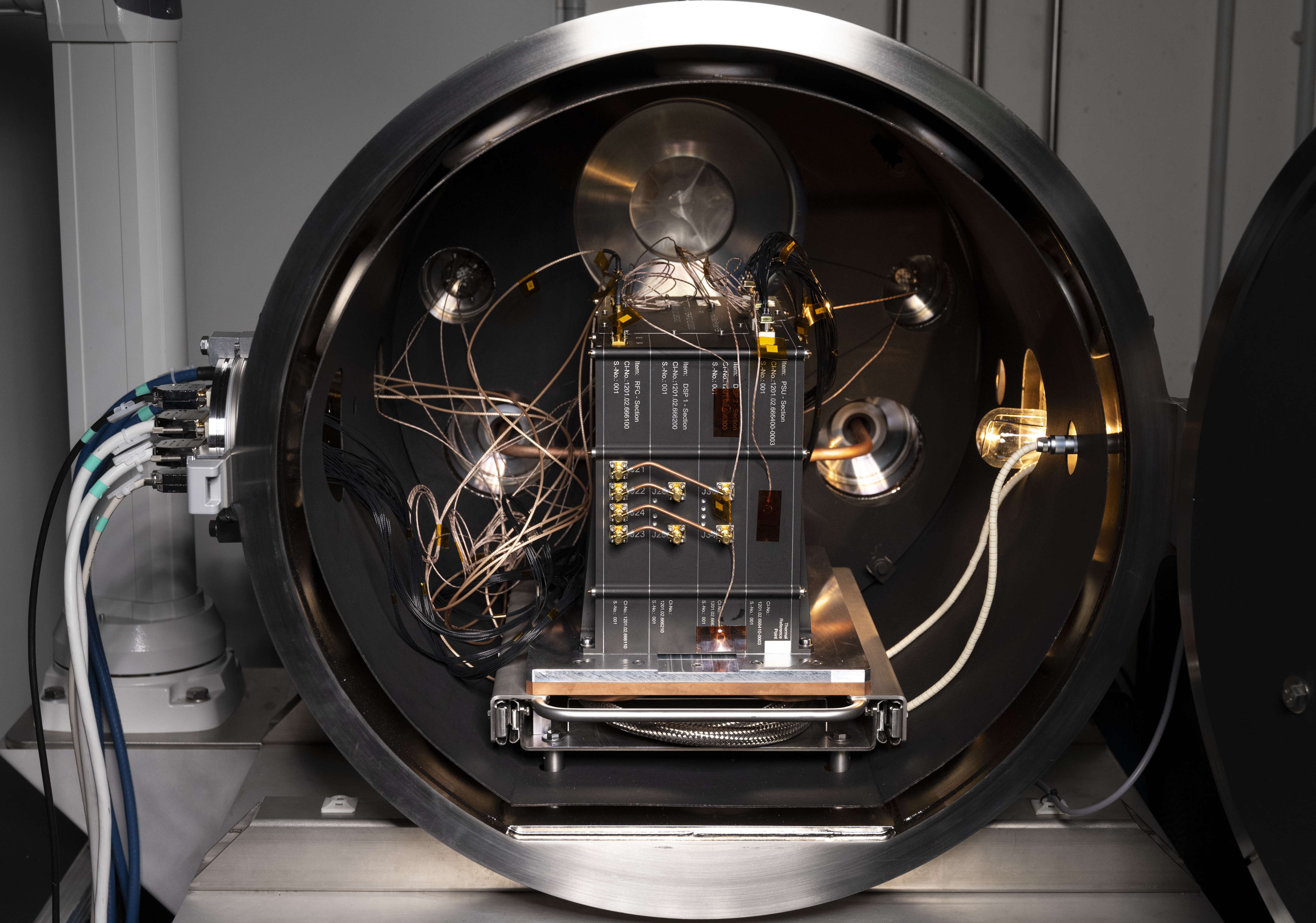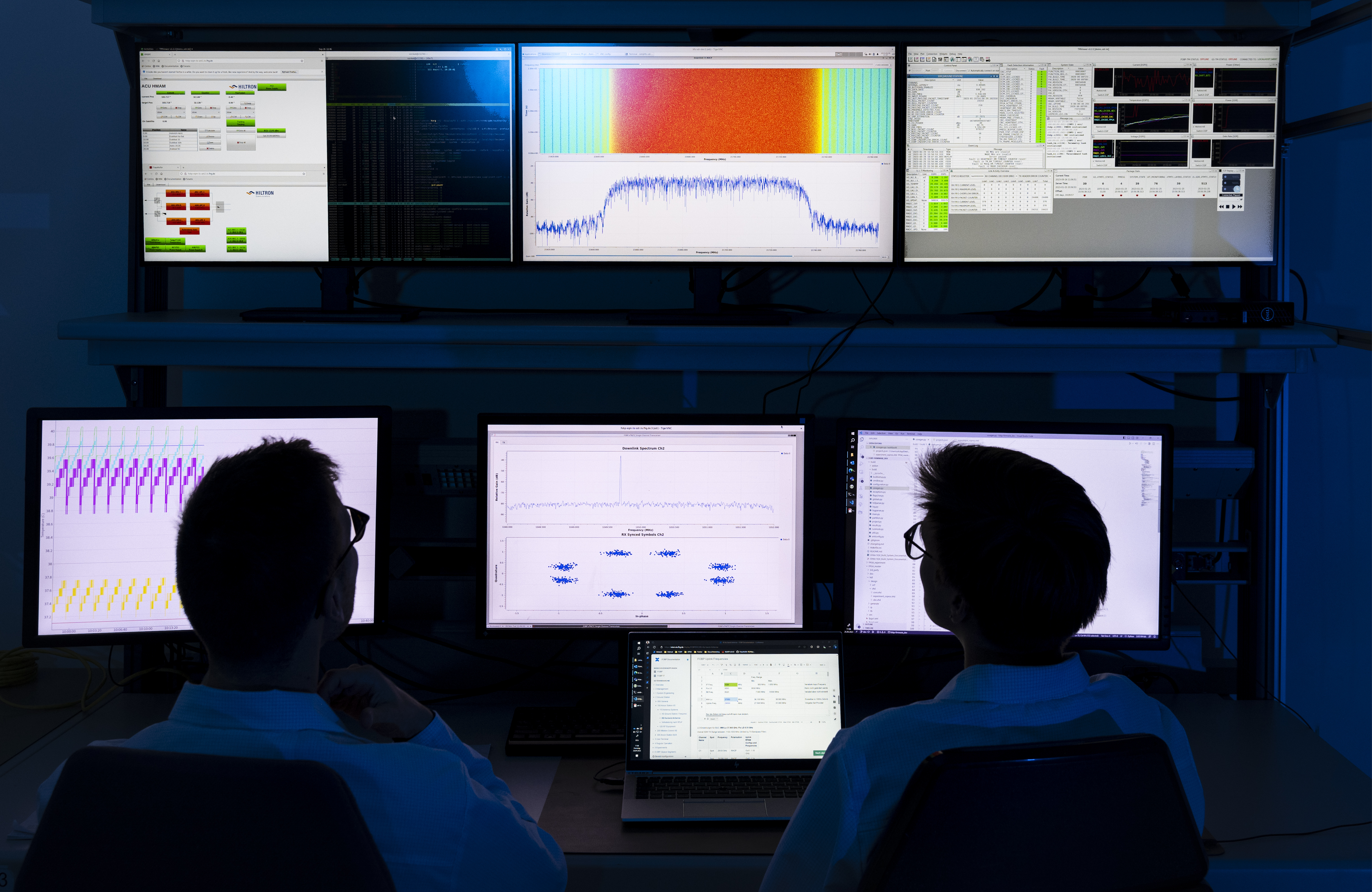Fraunhofer IIS opens laboratory in space
Erlangen, Germany: Radiation, vacuum, and substantial temperature fluctuations: extreme conditions prevail in space, presenting a tough challenge for satellite communications. With the Fraunhofer On-Board Processor (FOBP), experiments can be conducted in space to explore whether new technologies are operational under real conditions. The FOBP passed its final tests last week and has begun its service on board the Heinrich Hertz satellite of the German Space Agency at the German Aerospace Center (DLR).


Satellite communications players are often faced with the fact that higher-performance technologies come into use only once their functionality has also been proven in space. This delays progress and limits the satellite industry’s innovation potential. To remove these obstacles, Fraunhofer IIS has opened the FOBP, a laboratory in space equipped with a special feature: the satellite’s payload can be controlled from Earth at any time, even at an altitude of 36,000 kilometers, and reprogrammed for different use cases. “You can think of it like a smartphone that installs updates to meet new demands,” says Rainer Wansch, Head of the RF and SatCom Systems department.
The opportunities for the industry to use the experimental platform are just as diverse as satellite communications themselves. Their smooth operation depends on disparate elements coming together to form a seamless transmission chain. Such elements include the components installed in a satellite as well as the modems and antennas that enable communication from the ground. For these individual elements to work together in an optimum fashion, research is underway into various concepts that aim to manage capacity as efficiently as possible.
Help in the event of a disaster
Fraunhofer IIS is also conducting its own experiments to find out exactly how more powerful satellite communications could help improve the exchange of information on Earth in the future. One of the projects is an outcome of the disastrous flooding in Germany’s Ahr Valley two years ago. Water damage to the infrastructure there was so severe that it knocked out mobile communications for days. The aim now is to investigate how the FOBP’s flexibility can help provide rescue services with secure and stable direct access to the satellite. “This would guarantee communication in the event of a disaster, even independently of mobile communications and their commercial providers,” Wansch says.
This example illustrates how satellites are playing an increasingly important role in ground communications. In the new generation of mobile communications, these objects are now being systematically integrated into the 5G network. The aim is to create non-terrestrial networks in which terrestrial and satellite-based data traffic merge to form hybrid networks. These are intended to ensure that mobile communications reach even remote regions. How 5G can be connected via satellite is also being researched in an experiment with the FOBP.
Space simulation in Erlangen
Research institutes and companies can use the space laboratory in close cooperation with Fraunhofer IIS. The communications experiments are supported by the institute’s test infrastructure in Erlangen, which includes a ground station with a multiband satellite antenna that can monitor and control the FOBP. Fraunhofer IIS also has a thermal vacuum chamber in Erlangen, where technologies can be prepared for real use under simulated space conditions in an identical FOBP model.
The Heinrich Hertz Mission and its partners
The Heinrich Hertz mission marks the first launch of a dedicated German communications satellite for researching and testing new technologies and communications scenarios. The mission will thus make an important contribution to Germany’s information society. The Heinrich Hertz mission is being led by the German Space Agency at the German Aerospace Center (Deutsches Zentrum für Luft- und Raumfahrt; DLR) in Bonn on behalf of the Federal Ministry for Economic Affairs and Climate Action (Bundesministerium für Wirtschaft und Klimaschutz; BMWK) and with the participation of the Federal Ministry of Defence (Bundesministerium der Verteidigung; BMVg). OHB-System AG was contracted to develop and build the satellite. The companies IABG GmbH, MDA AG and TESAT GmbH & Co. KG are also involved in the development and testing of the satellite. OHB Digital Connect is responsible for the ground segment in collaboration with CGI. The satellite control centre is located in Bonn. The locations for the mission’s new ground stations are in Hürth (North Rhine-Westphalia) and Neustrelitz (Mecklenburg-Western Pomerania). Arianespace is responsible for launching the mission on board an Ariane 5 launch vehicle (VA261). A total of 42 partners are involved in the mission, of which 14 are involved in the scientific payload.
Fraunhofer On-Board Processor

Privacy warning
With the click on the play button an external video from www.youtube.com is loaded and started. Your data is possible transferred and stored to third party. Do not start the video if you disagree. Find more about the youtube privacy statement under the following link: https://policies.google.com/privacySince July 2023, the mission of the Heinrich Hertz satellite has been underway, and we are right in the middle of it. One of its key components is the Fraunhofer On-Board Processor (FOBP), which can be reprogrammed from Earth at any time and transforms into a laboratory that the satellite and communications industry can use to test their own technologies in space.